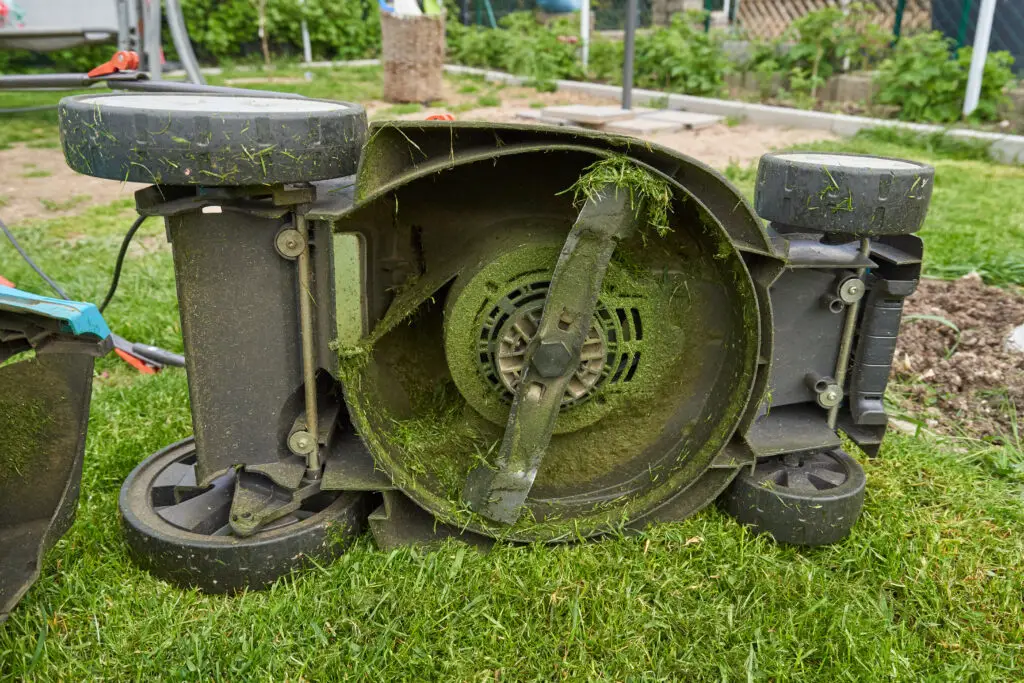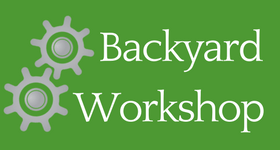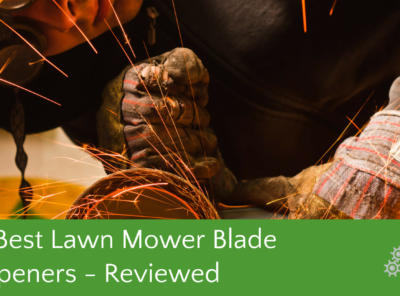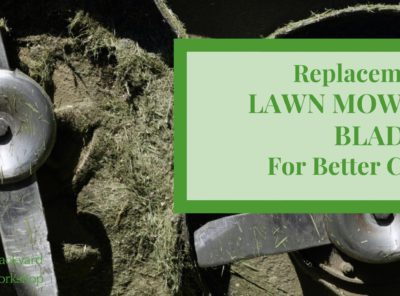Mulching Blades Vs. Regular Blades: Which is Best For Your Lawn?

There are many models of lawn mower blades on the market, and the number of options can make choosing the right one for your needs difficult. We’ll compare two of the most common blade types to help you make the right decision.
Comparing Mulching Blades vs. Regular Blades
The design of lawnmowers on the market is extremely wide-ranging. The different styles of lawn mower blades are easily replaceable and swapped around across many models. Typically, each machine is only suited for one kind of blade, and overuse of the wrong type may cause issues over time.
Here, we will primarily look at the blades and what conditions are best suited for each.
Standard Blade
Standard blades, also called regular or 2-in-1, are made with a straight cutting edge and are the most common mower blade sold. Their aerodynamic design focuses on slicing through the grass in one swift turn of the blade.
Most standard blades have large wind wings that cut tall grass and plants. This kind of blade, when mounted at a higher angle, helps the mower get through dense grass and creates more airflow to push the discharging clippings upwards into the bag or more widely dispersed on the lawn.
They make clean cuts that alleviate the fear of clumping grass on the lawn or clogging the machine.

Mulching Blade
Mulching blades, also known as 3-in-1, have deep grooves and serrated teeth to catch the grass and trim it into smaller pieces than other devices. The cutting edge is longer than regular blades, with a curved surface, allowing them to strike the grass repeatedly under the mower.
A mower with mulching blades is best used regularly as going over tall, dense, or overgrown grass can get trapped and lead to clogs or clumping grass. Therefore, when using a mulching blade, mow your lawn frequently – at least twice a week.
The primary benefit of mulching blades is the tiny pieces of vegetation they leave across the area. Mulch grass clippings decompose faster and form a natural fertilizer.
Manicuring or a Natural Look to Your Lawn
When the standard blade cuts the top layer off the grass, the airflow lifts the grass and is ideal for bagging your grass clippings. This feature makes the design the favorite of professionals who strive to achieve an idyllic look to the landscape. The standard blade also produces a more level cut.
Bagged clippings can be a chore to dispose of, and local regulations may restrict where you dump them, but the manicured look is desirable to many homeowners.
Mulching blades leave the clippings on the lawn. This process is a more environmentally friendly way of disposing of the grass but is not as clean and neat as mowing with regular blades. If the mulching blades leave clumps on your lawn, thinning them out with a rake is an easy fix.
It is still possible to bag with a mulching mower, despite the focus on leaving extra broken-down clippings on the lawn. However, by removing the clippings, the value of a mulching blade is lost.
When it comes to the look of your lawn, there are many pitfalls and tricks. Overall, when comparing mulching blades vs. regular blades for the job of beautification, the regular blade wins out.
Discharging, Mulching Blades vs. Regular Blades
Using a high-lift mower is best for bagging grass with a regular blade as it generates the most airflow. Medium-lift mowers are more suited to side-discharging your clippings for dispersal across the lawn.
Mowers that use mulching blades do not create the airflow needed to move clippings away from the mower. They are designed to leave the clippings in the wake of the mower. This process pushes the mulch below the top of the grass to feed the nutrients back into the soil.
In the comparison between mulching blades vs. regular blades in dispersing cut grass, the regular blade is superior.
Mowing Conditions
A mulching blade uses a circular motion to cut through the grass, facilitated by a curved design. This motion can lead to clogs both with wet or dense grass. Thus, mulching mowers perform poorly in rainy climates or over rapidly-growing grasses.
Conversely, while high lift blades will disperse the clippings more effectively, they collect dust within the mower deck. The dust increases wear and tear on the mower and can foster rust. This machine is not as suited for dry areas and would be better for well-nourished lawns.
Regular blades generally handle debris, such as leaves and twigs, better than mulching blades. This gives them an advantage in dealing with a yard with lots of trees and bushes.

Grass Handling
Mulching blades are not built to deal with robust grass. This is not ideal for mowing infrequently. Waiting too long may make the grass too tall and make operating the lawn mower unwieldy.
Qualities that may make the lawn less suited for mulching blades might include grass that is too tall, dense plant material, or particularly wet grass. Dry grass itself is not always a problem, but too much dust can be.
Regular blades will create an easily maintained, neat lawn with the grass neatly dispersed or disposed of with a bagger. They are better for less frequent lawn mowing schedules – even as little as once every two weeks.
However, without the natural fertilization that a mulching blade can offer, more time and resources will be needed to keep the soil healthy.
Natural Fertilizer, Mulching Blades vs. Regular Blades
Standard mower blades, especially on high lift mowers, are designed to discharge grass clippings into bags or disperse them evenly across the area. These lawn mower blades are not built for mulching per se. They do not break up the grass as finely.
Instead, these are best suited for manicuring a lawn as the clippings are easily removable. Of course, these will not make for healthy soil, but it will require more maintenance and another source to replenish some of the nutrients.
The fine clippings that a mulching blade produces easily break down. Moreover, in the best mulching blades, the airflow doesn’t move the clippings to the back of the mower. Instead, it will push the mulch clippings into the ground.
This organic material is rich in many essential minerals like nitrogen and phosphorus that can make all the difference to the health of the lawn.
Energy Consumption, Mulching Blades vs. Regular Blades
Standard blades create a powerful airflow to move the clippings away from the mower. This cuts quickly and cleanly, but the engine works harder under normal conditions – so they require substantially more energy. Electric mowers are particularly susceptible to this.
While high-lift machines with standard blades may need more power to do the job, this is sometimes necessary for tackling tough lawns.
The mulching mowers do not need to create the vacuum-like airflow required for bagging and thus are not as energy-intensive as the standard lawn mowers. They may even trim a lawn faster.
Overall, both for natural fertilization and reduced energy consumption, the mulching blades are more environmentally friendly.
Durability of Mulching Blades vs. Regular Blades
Regular blades are more robust compared to mulching blades. Standard lawn mower blades are also easily removable and replaceable. Though there are several options on the market, these straightforward blades tend to be cheaper.
These machines also do not hold up well against dust. For lawns with regular water and stable ground, this is no problem. However, as the airflow blows dust upwards, this can easily get into the machine and cause problems.
Mulching blades are more prone to clogging, especially when working with tough or wet grass. Their teeth and a curved shape make the upkeep more intense than regular blades. It’s harder to sharpen these blades.
If you aren’t careful, this may mean replacing the blade more frequently. Fortunately, replacing a mower blade is not a difficult procedure.
There are many mulching blades on the market, and it is possible to fit the bulk of them onto the body of most mowers – including standard mowers. Be warned that this may cause problems over time. The blades must be the correct size, and the mower engine must be powerful enough to handle them.
Final Thoughts
Ultimately, the decision is all about your preferred style, knowing what you and your lawn need.
If you can mow frequently and prefer to keep your lawn naturally fertilized, a mulching blade is best for you. If you are tackling a tough lawn or you can’t mow often, the regular blade is optimal.
Overall, keeping your lawn in good condition is an endeavor that requires many considerations. Familiarize yourself with the many factors that will contribute to your success.
Please comment below if you have questions.






